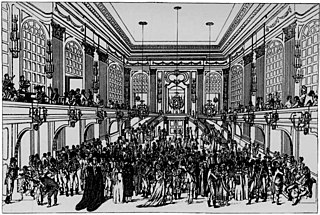 W
WThe history of dance is difficult to access because dance does not often leave behind clearly identifiable physical artefacts that last over millennia, such as stone tools, hunting implements or cave paintings. It is not possible to identify with exact precision when dance became part of human culture.
 W
WBallet is a formalized form of dance with its origins in the Italian Renaissance courts of 15th and 16th centuries. Ballet spread from Italy to France with the help of Catherine de' Medici, where ballet developed even further under her aristocratic influence. An early example of Catherine's development of ballet is through 'Le Paradis d' Amour', a piece of work presented at her daughter's wedding, Marguerite de Valois to Henry of Navarre. Aristocratic money was responsible for the initial stages of development in 'court ballet', as it was royal money that dictated the ideas, literature and music used in ballets that were created to primarily entertain the aristocrats of the time. The first formal 'court ballet' ever recognized was staged in 1573, 'Ballet des Polonais'. In true form of royal entertainment, 'Ballet des Polonais' was commissioned by Catherine de' Medici to honor the Polish ambassadors who were visiting Paris upon the accession of Henry of Anjou to the throne of Poland. In 1581, Catherine de' Medici commissioned another court ballet, Ballet Comique de la Reine, however it was her compatriot, Balthasar de Beaujoyeulx, who organized the ballet. Catherine de' Medici and Balthasar de Beaujoyeulx were responsible for presenting the first court ballet ever to apply the principles of Baif's Academie, by integrating poetry, dance, music and set design to convey a unified dramatic storyline. Moreover, the early organization and development of 'court ballet' was funded by, influenced by and produced by the aristocrats of the time, fulfilling both their personal entertainment and political propaganda needs.
 W
WThe History of Hip-Hop dances encompasses the people and events since the late 1960s that have contributed to the development of early hip-hop dance styles, such as uprock, breaking, locking, roboting, boogaloo, and popping. African Americans created uprock and breaking in New York City. African Americans in California created locking, roboting, boogaloo, and popping—collectively referred to as the funk styles. All of these dance styles are different stylistically. They share common ground in their street origins and in their improvisational nature of hip hop.
 W
WDance in China has a long recorded history. Depictions of dancing in China appeared over 4,000 years ago. The early dances may be folk dances or ritual dances, some of which developed into court dances. The most important of the early dances served important ritual and ceremonial roles and are known as yayue which continued to be performed at the imperial court until the Qing dynasty. A profusion of dances in popular and court entertainment as well as folk dances have been recorded in ancient texts. The art of dance in China reached a peak during the Tang dynasty when numerous dances were recorded. Dancing as an individual art form declined in the later eras when dances become incorporated into operas and female dancing also declined when footbinding became more prevalent. In more recent times dance has enjoyed a resurgence, and it is widely performed by the public and professionals alike.
 W
WMasks have a long history of use in rituals and dance. In the Western world, masks have been used in dances to portray certain characters, disguise identity, and to depersonalize the dancer. The types of masks and their usage in dance have evolved in time, and are still employed in modern choreographic works.
 W
WThe composer Wolfgang Amadeus Mozart wrote a great deal of dance music, both for public use and as elements of larger works such as operas, quartets, and symphonies. According to the reminiscences of those who knew him, the composer himself enjoyed dancing very much; he was skillful and danced often.
 W
WRegency dance is the term for historical dances of the period ranging roughly from 1790 to 1825. Some feel that the popular use of the term "Regency dance" is not technically correct, as the actual English Regency lasted only from 1811 until 1820. However, the term "Regency" has been used to refer to a much broader period than the historical Regency for a very long time, particularly in areas such as the history of art and architecture, literature, and clothing. This is because there are consistencies of style over this period which make having a single term useful.
 W
WRenaissance dances belong to the broad group of historical dances. During the Renaissance period, there was a distinction between country dances and court dances. Court dances required the dancers to be trained and were often for display and entertainment, whereas country dances could be attempted by anyone. At Court, the formal entertainment would often be followed by many hours of country dances which all present could join in. Dances described as country dances such as Chiarantana or Chiaranzana remained popular over a long period – over two centuries in the case of this dance. A Renaissance dance can be likened to a ball.
 W
WTango, a distinctive tango dance and the corresponding musical style of tango music, began in the working-class port neighborhoods of Buenos Aires (Argentina) and Montevideo (Uruguay); on both sides of the Rio de la Plata.
 W
WNardo Zalko was an Argentinian-French journalist, author, researcher, and historian of tango. His contribution to the scholarly research of tango history is extensive.